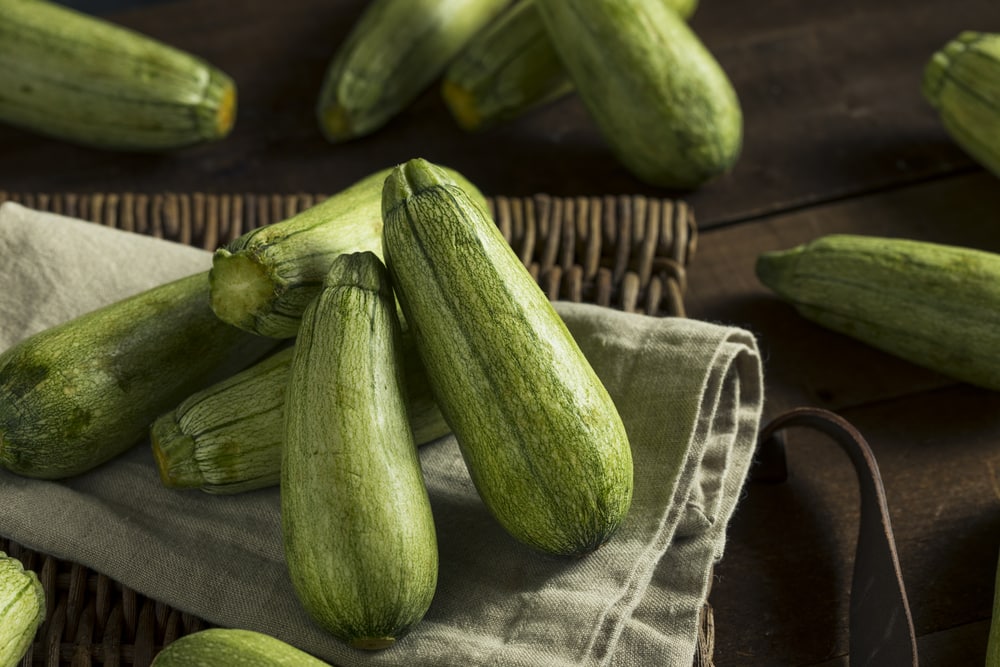
When it comes down to the summer vegetables, it’s obvious that zucchini will be on the list, but there are other vegetables out there, including Mexican squash. Having said that, these two vegetables are often confused with each other, which is why we are focusing on Mexican squash vs zucchini to share the differences!
Mexican Squash vs Zucchini
Zucchini
Zucchini also goes by the name baby marrow, and it’s summer squash. This is a vine-based herbaceous plant, and the zucchini is harvested when the seeds are still immature, and the rind is edible and soft. Zucchini is available in different colors, but green and golden zucchini is the most common. However, the golden zucchini has a deep orange or yellow color. In the culinary world, they are vegetables and are consumed as savory dishes.
Zucchini has a slightly bitter flavor, and if not chosen properly, it can lead to gastric issues. For the most part, the bitter zucchini is caused by cross-pollination and stressed growing conditions. In addition, zucchini measuring around eight inches is suitable for cooking because, at that stage, the skin will be hard, but the seeds will be mature (it is seeded and peeled to cook). In fact, the zucchini with a flower attached shows that the fruit is immature and fresh.
On top of everything, zucchini has a sweeter flavor when it’s fresh, and it has to be cooked for serving. It is cooked with a variety of cooking methods, such as baking, stuffing, boiling, steaming, grilling, frying, and barbecuing. In addition, it can be baked in bread (yes, just like banana bread). As far as the flowers are concerned, they can be stuffed and have become an absolute delicacy if it is deep-fried in fats. Overall, it has a delicate flavor.
Zucchini needs quick-cooking, and it tastes the best when cooked with olive oil and butter. In addition, it can be made with fresh herbs to accentuate the flavors. The best thing about zucchini is that you can eat it raw in shredded or sliced form, and it tastes the best in cold salads. As for the mature zucchini, it’s best to bake it in bread, and you can even use a spiralizer to make zucchini noodles. If you are thinking about the texture, it has a mild crunch, and the skin boasts an earthy and grassy flavor.
Mexican Squash
Squash is one of the most commonly used summer vegetables out there, but recently, Mexican squash has gained more popularity for its unique flavor and aroma. The Mexican squash is available in different sizes, but it ranges from baby size to large size. It has a very mild flavor, and it is known for its edible skin (yup, it tastes well as well). The skin has a pale and green appearance, and it’s extremely thin to ensure quick peeling and preparation.
For the most part, Mexican squash has a seedless form which means the flesh will be ready to cook once the vegetable is peeled. To illustrate, the flesh has a white appearance, but it tastes sweeter, especially when compared to the zucchini. As far as the appearance is concerned, Mexican squash has an oblong and larger shape. Since we have already mentioned that this vegetable is common in summers, you will be able to find it from June to October.
When it comes down to the applications, Mexican squash is a promising choice for stir-fries, and it doesn’t require much peeling. In addition, it can be added to the roasted, grilled, and sautéed vegetable medleys. Mexican squash is native to Mexico and is used for cooking Calabacitas, a common Mexican dish that is made with a combination of fresh garden tomatoes, cheese, and onion. Also, it is also known as tatuma squash and is grown in California.
It tastes amazing in the pasta and salads. As far as the availability is concerned, it’s available all around the world, but it will be more convenient to find it in warm climates. While we have already mentioned that it can be cooked, you can also eat it raw and makes a great appetizer. In fact, you can simply drizzle some lime juice and salt to make a delicious snack!